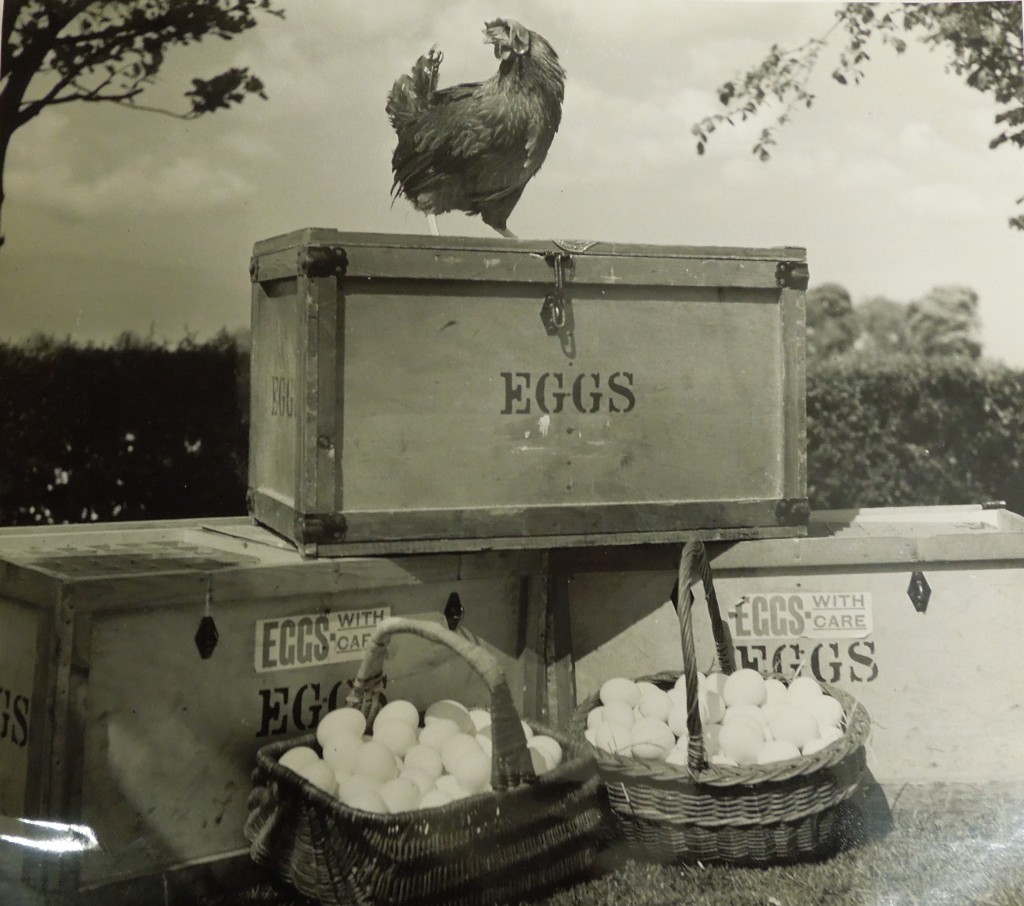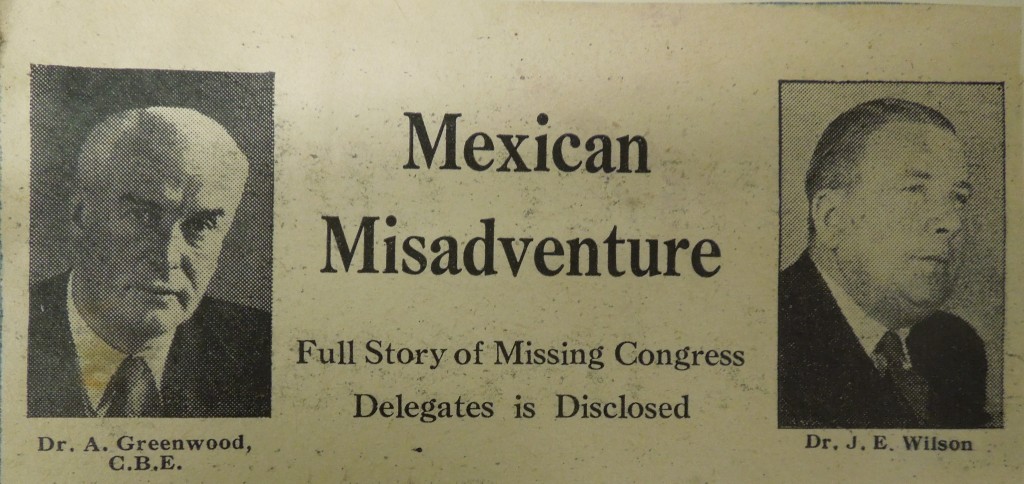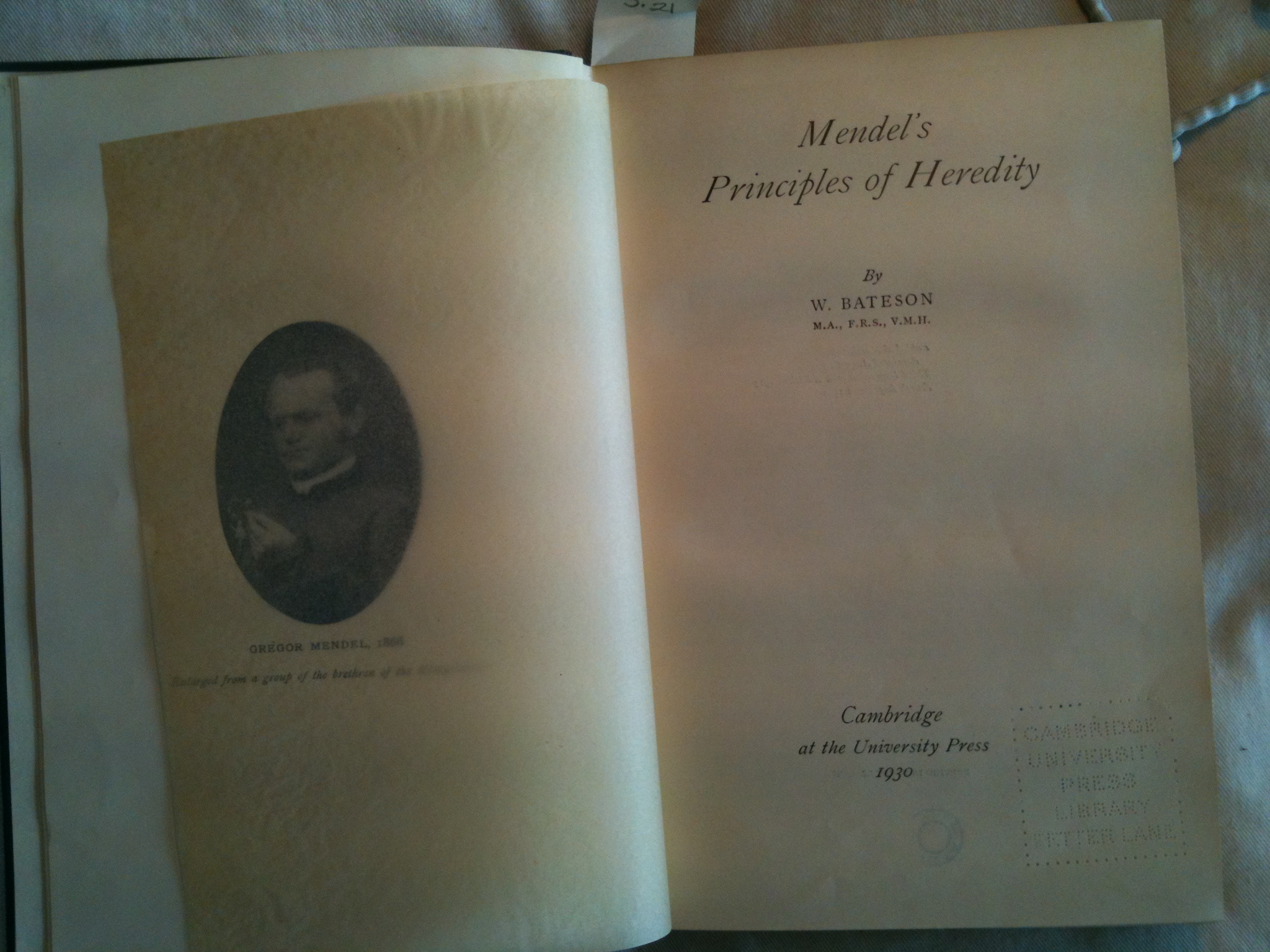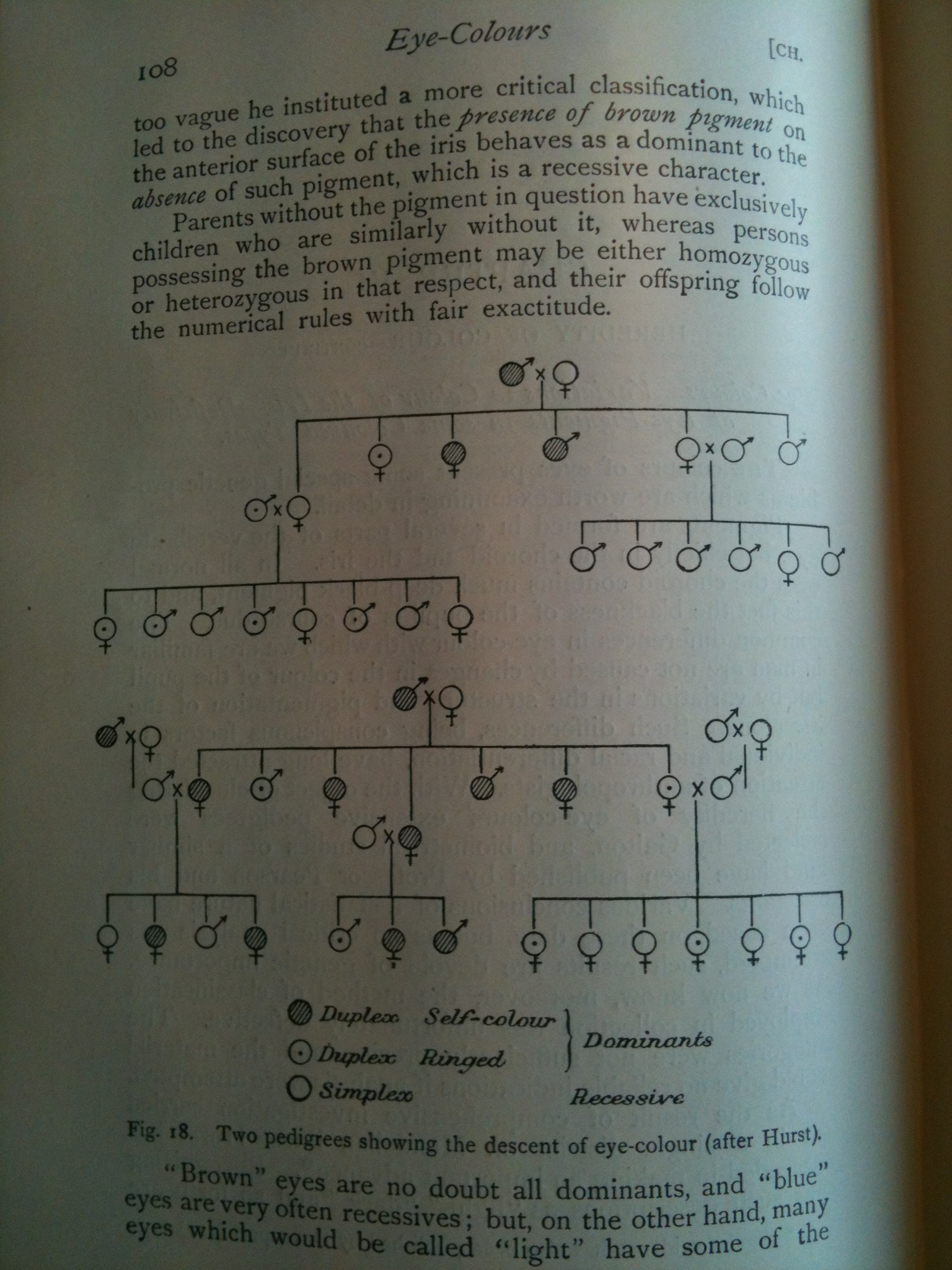Edinburgh holds a number of world records in genetics and animal breeding, which, considering its historic significance in the history of the science in Britain, is not all that surprising. Its most famous ‘first’ is of course Dolly the sheep – the first mammal to be cloned from adult cells – although there are many other examples. However, sometimes the ‘almost firsts’ are just as interesting historically, as well as a little poignant, as I found recently when cataloguing the archive of Alan Greenwood, director of the Poultry Research Centre from 1947 to 1962.
Amongst his wonderful collection of photographs is one depicting a hen standing proudly astride crates and baskets of eggs. The caption informs us that the hen is ‘the sister of the hen which laid 1515 eggs in 9 laying years and shared the world’s record.’ This was intriguing enough in itself, but a full explanation wasn’t forthcoming until I came across two typed pages in Greenwood’s collection of draft lectures and articles. Titled ‘So Near and Yet So Far’, this short piece describes the particularly productive life of the chicken named L1641, ‘from which so little and yet so much more was hoped.’
Part of the research carried out at both the Institute of Animal Genetics and the Poultry Research Centre in Edinburgh was concerned with increasing the productivity and economic value of domestic animals by applied genetics and breeding schemes. In the case of chickens, a large aspect of their value clearly lies in the number and quality of eggs they produce. On 10 April 1939 however, a chicken was hatched at the Institute which would push the limits of egg production beyond the expectations of the staff.
Chicken L1641 (as she was wingbanded) laid her first egg soon after the outbreak of the Second World War. From her first year she was a high producer, laying 273 eggs ‘in spite of wartime stringencies’ as Greenwood wryly tells us. Over the next 8 years she produced on average 142 eggs per year. This is high, although not as impressive as the hens which held world records for the number of eggs laid in a single year. In 1915 a white Leghorn hen in Greensboro, Maryland by the name of Lady Eglantine set a record at 314 eggs in one year. A number of Australorp hens in Australia broke this record successively during the 1920s however, with the number of eggs in one year standing at 347 to 354 to 364!
Where Edinburgh’s chicken L1641 excelled, however, was in the total number of eggs produced over a lifetime. By the time she went into moult in the autumn of 1948, she held the joint world record, which stood at 1515 eggs. However, the strain imposed on her calcified and thickened arteries by the moult was too great, and she died before the end of the year. As Greenwood sadly concludes his article, ‘One more egg only and she would have made history.’
Alan Greenwood’s catalogue can be viewed on our brand new website at: http://www.archives.lib.ed.ac.uk/towardsdolly/








